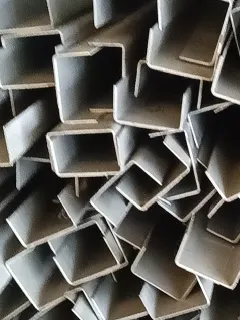loading...
- No. 9, Xingyuan South Street, Dongwaihuan Road, Zaoqiang County, Hengshui, Hebei, China
- admin@zjcomposites.com
- +86 15097380338
- Welcome to visit our website!
Pricing Guide for GRP Grating Products and Options
Understanding GRP Grating Prices A Comprehensive Overview
When it comes to industrial applications, GRP (Glass Reinforced Plastic) grating has emerged as a popular choice for various sectors, including construction, chemical processing, and marine environments. Its lightweight, corrosion-resistant, and non-conductive properties make GRP grating an ideal fit for environments that demand high performance while ensuring safety and longevity. However, one of the critical factors businesses consider before opting for GRP grating is cost. This article dives into the intricacies of GRP grating prices, exploring factors that influence pricing and providing guidance for potential buyers.
What is GRP Grating?
GRP grating is made from a combination of glass reinforced plastic materials, predominantly resin and fiberglass. The result is a strong, durable structure that is not only resistant to chemicals and corrosion but also lightweight and easy to install. GRP grating is available in various styles and configurations, including standard panels, stair treads, and custom solutions, making it versatile for numerous applications.
Factors Influencing GRP Grating Prices
1. Material Composition The quality and composition of the resin and fiberglass used in GRP grating can significantly affect its price. Higher-grade materials typically provide better strength, durability, and resistance to environmental factors, resulting in a higher upfront cost. However, investing in quality materials may offer long-term savings due to reduced maintenance and replacement costs.
2. Manufacturing Process The method by which GRP grating is manufactured plays a crucial role in pricing. There are various techniques, including hand lay-up, pultrusion, and filament winding. Each technique has different costs associated with tooling, labor, and materials. For example, pultruded grating often features a more uniform structure and better load-bearing capabilities, which may justify a higher price point.
grp grating prices

3. Size and Customization Standard sizes of GRP grating tend to be less expensive than custom solutions. Customization can include specific dimensions, colors, and surface textures, all of which add to the base cost. Buyers should assess their specific needs and decide if custom solutions justify the additional expenditure.
4. Quantity and Bulk Discounts Purchasing GRP grating in bulk can lead to significant discounts. Many manufacturers and suppliers offer reduced prices per square meter for larger orders, which can be beneficial for projects requiring extensive installations. Planning ahead and estimating accurate quantities can save customers a considerable amount on their overall costs.
5. Market Demand and Supply Like any other product, the pricing of GRP grating is influenced by market dynamics. During periods of high demand or supply chain disruptions, prices may increase. Buyers should stay informed about market trends and consider timing their purchases accordingly.
6. Supplier Location The geographical location of the supplier can also impact pricing. Local suppliers may provide more competitive rates due to reduced shipping costs. However, it's crucial to evaluate the supplier's reputation and product quality alongside pricing.
Making an Informed Decision
When investing in GRP grating, it’s essential to consider all factors that could influence the total cost. Potential buyers should conduct thorough research, compare quotes from different suppliers, and assess the long-term benefits of investing in high-quality products. Additionally, understanding the specific requirements of your project can help identify the most suitable type of GRP grating, balancing quality and cost-effectiveness.
In conclusion, GRP grating prices are determined by a complex interplay of material quality, manufacturing processes, size, customization options, and market dynamics. By being informed and strategic about your purchasing decisions, you can ensure that you get the best value for your investment in GRP grating. Whether it's for flooring, walkways, or industrial platforms, understanding these factors will aid in making a knowledgeable choice that aligns with your project's needs.
-
The Rise of FRP Profiles: Strong, Lightweight, and Built to LastNewsJul.14,2025
-
SMC Panel Tanks: A Modern Water Storage Solution for All EnvironmentsNewsJul.14,2025
-
GRP Grating: A Modern Solution for Safe and Durable Access SystemsNewsJul.14,2025
-
Galvanized Steel Water Tanks: Durable, Reliable, and Ready for UseNewsJul.14,2025
-
FRP Mini Mesh Grating: The Safer, Smarter Flooring SolutionNewsJul.14,2025
-
Exploring FRP Vessels: Durable Solutions for Modern Fluid HandlingNewsJul.14,2025
-
GRP Structures: The Future of Lightweight, High-Performance EngineeringNewsJun.20,2025
